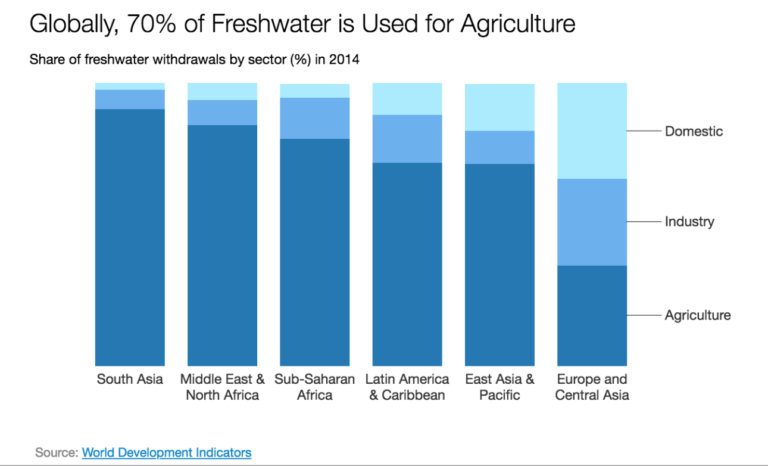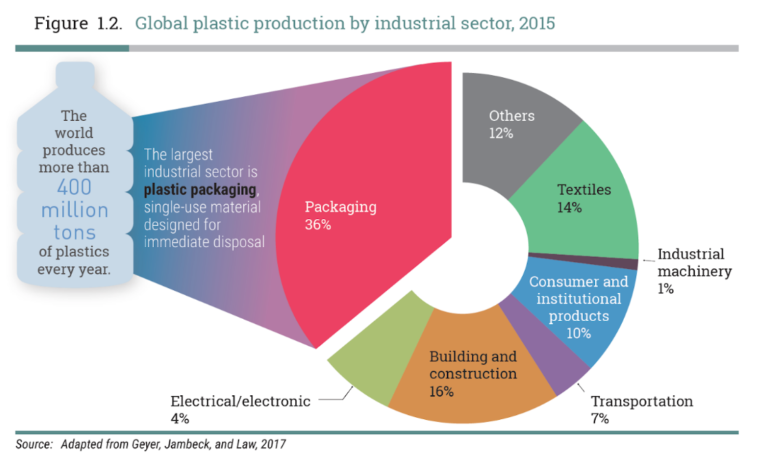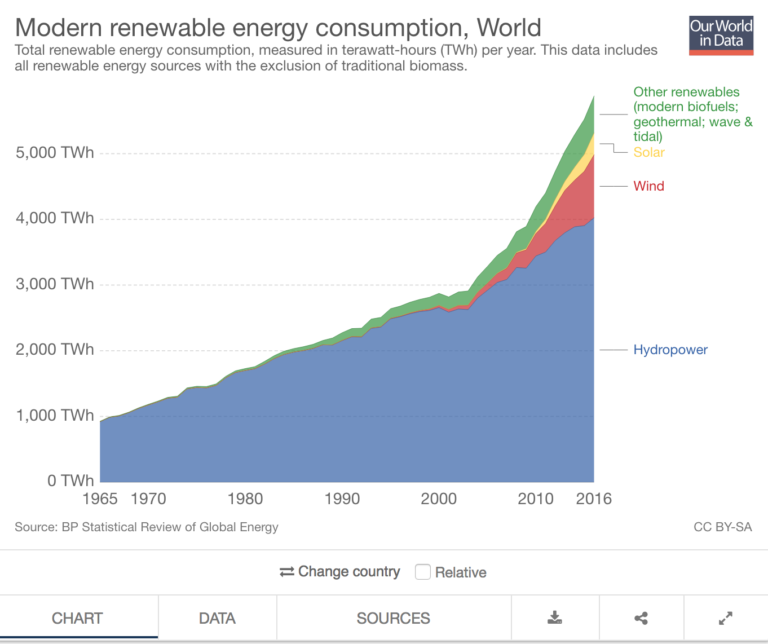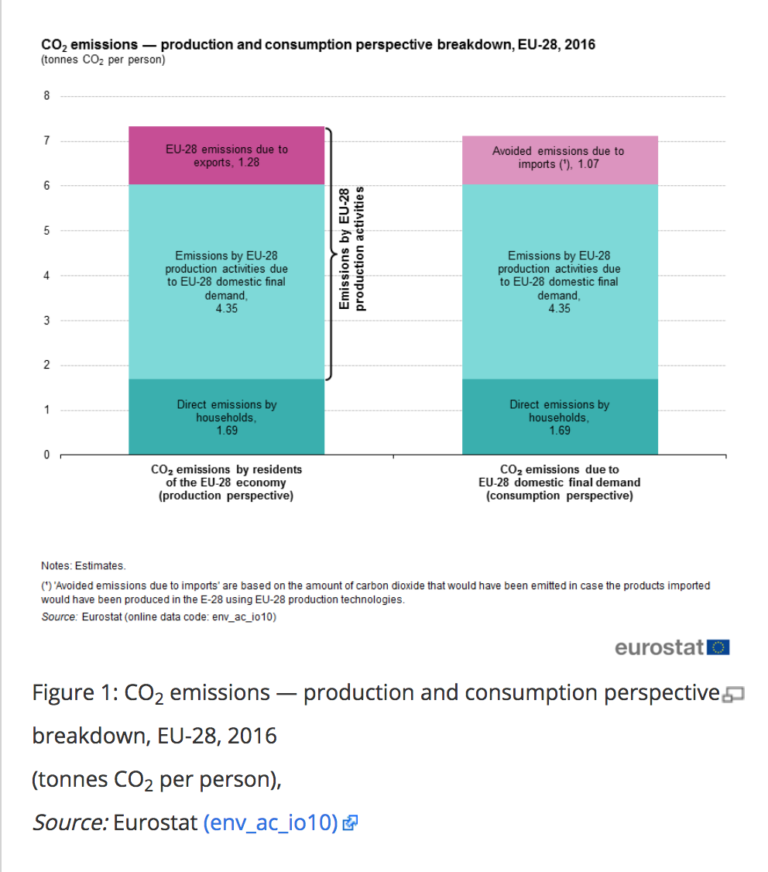Facts and figures are an imperative part of reaching an understanding of a topic. Statistics, “sets of mathematical equations that we use to analyze”, provide us with a quantifiable way to measure progress and/or deterioration.
When it comes to sustainability and sustainable development, statistics provide a way to analyze our consumption patterns, predict climate change and resource scarcity scenarios, estimate the positive impact of potential solutions and measure where social development and equity is needed.
We’ve put together a number of sustainability statistics worth knowing about water, waste, plastic pollution, energy, emissions and the built environment.
Statistics About Water:
- 3.6 billion of the global population live in potentially water-stressed areas. This is expected to reach 4.8 – 5.7 billion by 2050.
- Globally 70% of fresh water is used for agriculture.
- By 2050, an estimated 50% increase in agricultural production and a 15% increase in water withdrawals is expected.
- The average beef hamburger takes 2400 liters of water to produce.
- With the current climate change scenario, between 24 million and 700 million people will be displaced by 2030 due to water scarcity.

Statistics About Waste:
- In 2016, the world’s’ cities generated 2.01 billion tonnes of solid waste, amounting to a footprint of 0.74 kilograms per person per day.
- With rapid population growth and urbanization, annual waste generation is expected to increase by 70% from 2016 levels to 3.40 billion tonnes in 2050.
- 5.0 tonnes of waste were generated per EU inhabitant in 2016.
- 45.5% of waste were landfilled and 37.8% were recycled in the EU in 2016.
- A loss of 30% of all food produced worldwide occurs along the value-added chain “from farm to fork” every year which equates to about 1.3 billion tonnes of food waste.

Statistics About Plastic Pollution:
- An estimated five trillion plastic bags are used worldwide each year.
- 400 million tons of plastics are produced globally every year.
- Globally only 9% of plastic ever produced has been recycled, whilst 79% can now be found in landfills, dumps or the environment and 12% has been incinerated.
- Europe recycles 30% of its produced plastics.
- In 2015 almost 50% of the plastic waste generated globally was single-use packaging.
- If continued at the same rate, the plastic industry will account for 20% of the world’s total oil consumption by 2050.

Statistics About Energy:
- Roughly 1 billion people (13% of the world’s population) live without electricity with around 118 million people gaining access to electricity each year.
- In 2016, final consumption of electricity, gas, steam and air-conditioning had the biggest carbon footprint in the European Union.
- In 2017 314,000 wind turbines supplied nearly 4 percent of global electricity.
- In 2016, the share of energy from renewable sources reached 17% in the European Union, double the share in 2004 (8.5%),
- One-fifth of the world’s final energy consumption in 2013 was from renewables.
- Globally, the world produced approximately 5.9 TWh of modern renewable energy in 2016, showing a 5 to 6-fold increase since the 1960s.

Statistics About Emissions:
- Nine out of 10 people worldwide breathe polluted air.
- An estimated 7 million people die every year from air pollution, with almost 90 percent of deaths occurring in countries of low and middle incomes.
- The European Union’s total carbon footprint was equal to 7.1 tonnes of CO2 per person in 2016.
- Greenhouse gas emissions in the EU decreased by 22% between 1990 and 2016.
- According to the IPCC, human-caused emissions of carbon dioxide need to fall 45 percent from 2010 levels by 2030 and reach net-zero around 2050

Statistics About The Built Environment:
- Currently 55% of the world’s population live in urban areas. This is expected to increase to 68% by 2050.
- The built environment is responsible for half of all global energy use and half of all greenhouse gas emissions.
- Buildings consume one-sixth of all freshwater, one-quarter of world wood harvests and four-tenths of all other raw materials.
- The construction and later demolition of buildings produces 40% of all waste.
- Building occupants in high-performing, green-certified office environments “scored 26% higher on tests of cognitive function, had 30% fewer sickness syndromes, and had 6% higher sleep quality scores than those in high-performing but non-certified buildings”.
References
2017, https://www.nationalgeographic.com/environment/freshwater/freshwater-crisis/. Accessed 2 Jan 2019. Cheeseman, Gina-Marie. "1/3 Of Food Produced For Human Consumption Is Wasted". Triplepundit.Com, 2018, https://www.triplepundit.com/2011/05/industrialized-countries-waste-produce/. Accessed 2 Jan 2011. "Drinking-Water". Who.Int, 2017, https://www.who.int/news-room/fact-sheets/detail/drinking-water. Accessed 2 Jan 2019. Farrell, Sarah. "Green Building: Benefits And Barriers - Ecolution Consulting". Ecolution.Co.Za, 2019, http://ecolution.co.za/2018/03/10/green-building-benefits-barriers/. Accessed 2 Jan 2019. "Greenhouse Gas Emission Statistics - Carbon Footprints - Statistics Explained". Ec.Europa.Eu, 2018, https://ec.europa.eu/eurostat/statistics-explained/index.php/Greenhouse_gas_emission_statistics_-_carbon_footprints. Accessed 2 Jan 2019. Jones, S., Petrullo, M., Morton, B., Laquidara-Carr, D., Buckley, B. and Logan, K. (2018). World Green Building Trends 2018 SMR Final. 10th ed. [pdf] New York: Dodge Data & Analytics. Available at: https://www.construction.com/toolkit/reports/world-green-building-trends-2018 KHOKHAR, TARIQ. "Chart: Globally, 70% Of Freshwater Is Used For Agriculture". The Data Blog, 2017, https://blogs.worldbank.org/opendata/chart-globally-70-freshwater-used-agriculture. Accessed 2 Jan 2019. "Solid Waste Management". World Bank, 2018, http://www.worldbank.org/en/topic/urbandevelopment/brief/solid-waste-management. Accessed 2 Jan 2019. UNEP (2018). SINGLE-USE PLASTICS: A Roadmap for Sustainability Wadhwa, Divyanshi, and Donna Barne. "Year In Review: 2018 In 14 Charts". World Bank, 2018, https://www.worldbank.org/en/news/feature/2018/12/21/year-in-review-2018-in-14-charts?cid=ECR_TT_WorldBank_EN_EXT. Accessed 17 Dec 2018.


